4. Biofabricating Dyes and Materials#
During the week dedicated to natural materials I had the opportunity to resume some of my experiments that I have carried out in the past that concerned the bioleather and kombucha.
I gave substance to my previous recipes comparing them with those provided by the lecture notes and the learned notions.

The result of this week’s exercitations was certainly intense. I have collaborated with my colleague Chiara Ganzerla. Unfortunately I regretted not being able to experiment the bacteria dye also because it could actually be interesting for the future.
Bioplastics#
we have dealt with the “recipes” of bioplastics playing mainly with the replacement of the main liquid, integrating animal or vegetable fibers (that I had collected months ago for use them in this type of projects) and above all we mixed to the liquid of the mixture however, natural materials in order not to distort the nature of the plastic.
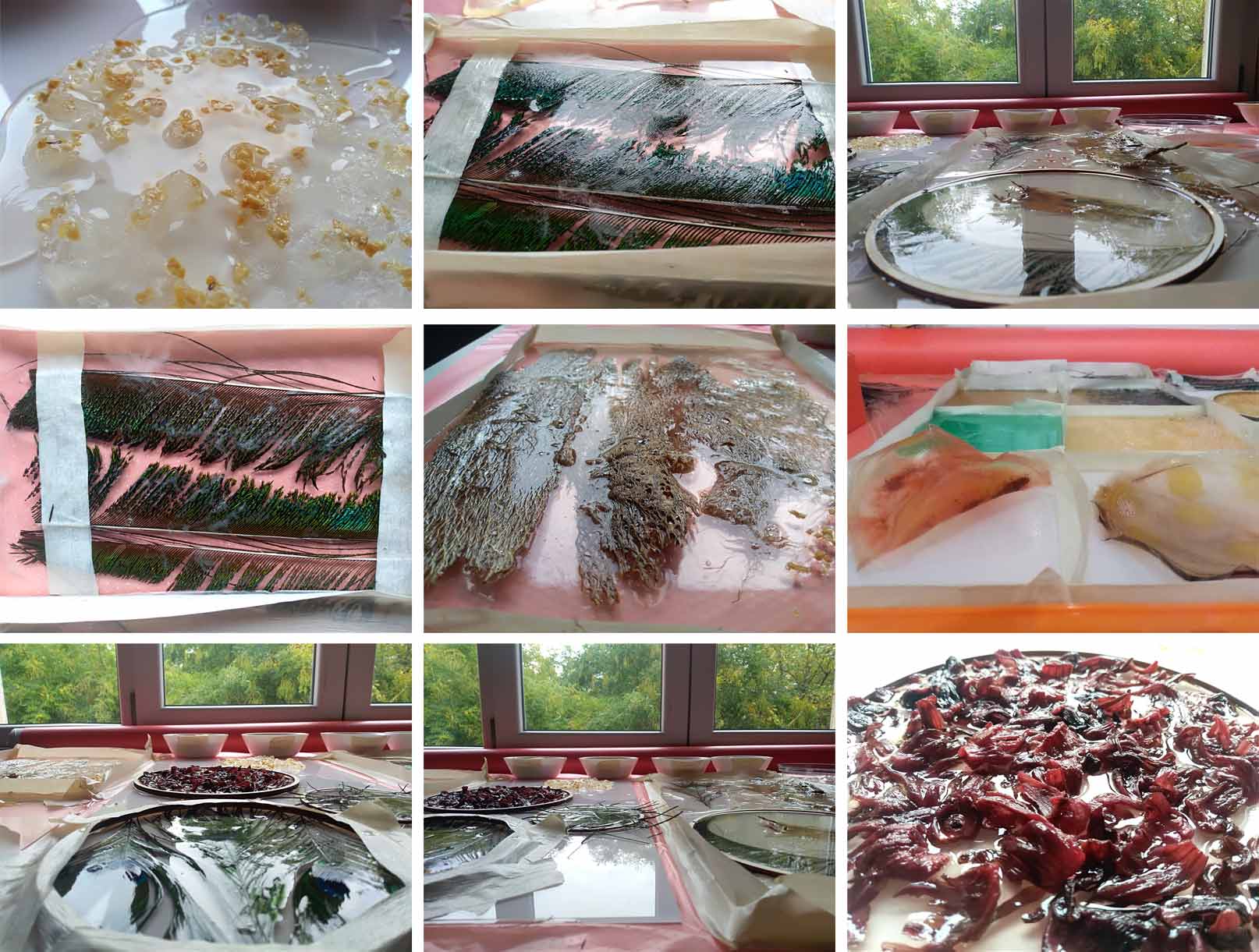
we used the wemake spaces for two intense days of “pasticci” where we dedicated time to both the required categories (plastics and colors). On the first day we focused on the consistency of bioplastics. We followed the basic recipe for Bioplastic but incorporating peacock feathers and prickly pear fiber inside them. we also used the hibiscus color scraps trying to see how the liquid plastic managed to infiltrate the small cracks in the fibers.

fruitleather#
I brought to the fablab of my personal samples that I developed in 2017 of fruit leather. For lack of time (especially due to drying times that last whole days) I could only show but not implement my knowledge The recipe it’s very simple, i’ve followed differents but it basically work for dry many kind of fruits.
Fruitleather recipe * 500g fruits puréé (if edible without seeds and peel) * 1 teaspoon lemon
I’ve dryed the pureè in oven at 70/80° (celsius) for 48h approximately.
I still suggest, if you use the oven, to brush the surface of the pan with butter or oil. This will detach the fruitleather sheet by evaporating the humeness of the puree. With the baking paper instead I noticed that for such a long time of contact the paper tends to shrivel and you get a sheet of fruit with those folds.

kombucha#
I had already had some works with the scoby and I proposed to grow the komucha in a large basin in the fablab.
Kombucha recipe * 5 gr tea * 7 gr vinegar * 70 gr Sugar * 500 ml Water * 20 gr kombucha starter (scoby or liquid)
A few years ago I was able to grow my kombucha very much, but never on very large surfaces. I prepared the scoby bath with organic green tea, vinegar and sugar on wednesday. it is possible that the strong humidity and the slow fermentation caused surface molds to develop which I removed on Saturday. we hope that it will not be repeated as inconvenient!
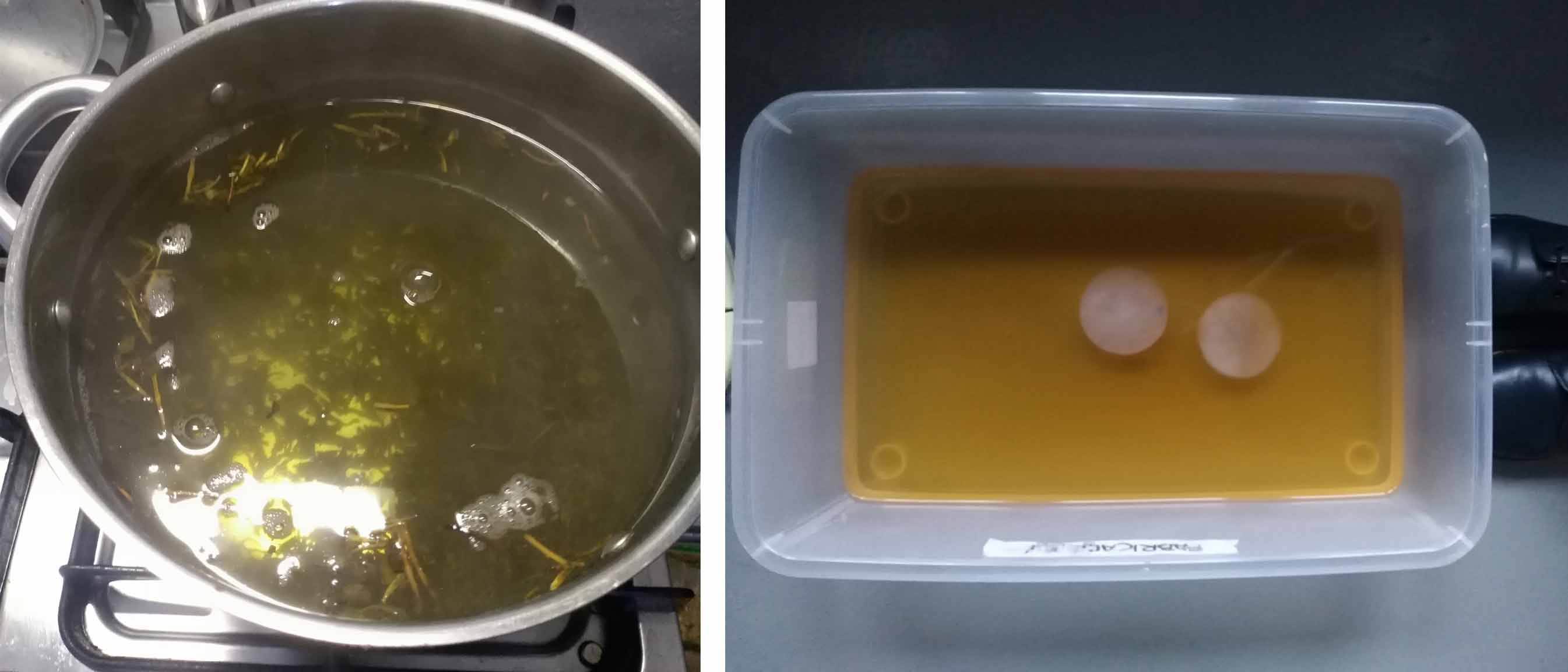
Final results
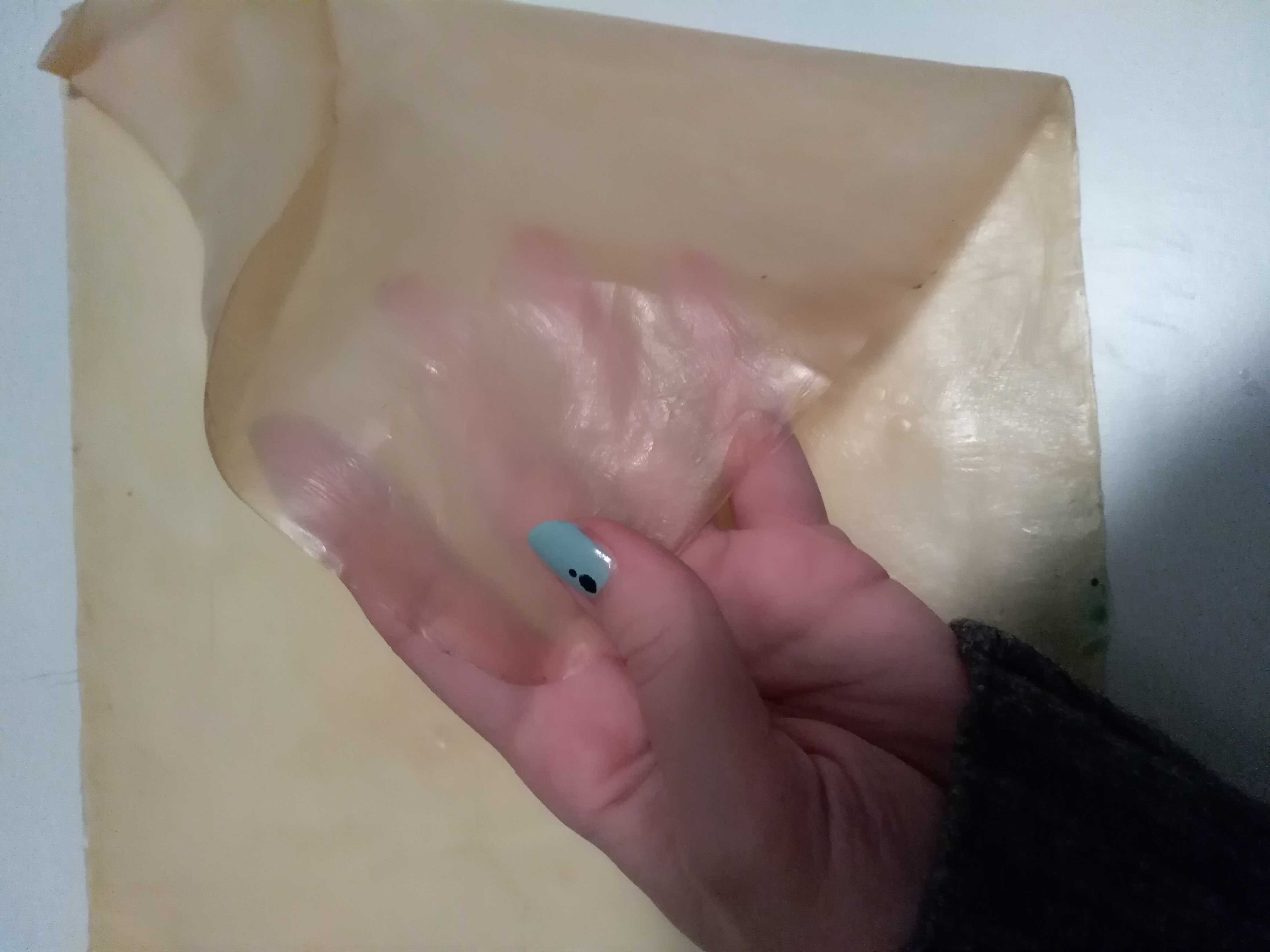
bioplastics - Bioresins - Biosilicones#
during the Saturday we tried to follow other recipes or make substitutions above all by replacing the part of water with other liquids (mostly drinks). We were curious to try all the textures proposed depending on the proportion of glycerine.
Bioplastic recipe (from slides) * 48 gr Gelatine * 12 gr Glycerine * 240 ml Water
Biresin recipe (from slides) * 48 gr Gelatine * 8 gr Glycerine * 240 ml Water
Biosilicone recipe (from slides) * 48 gr Gelatine * 24 gr Glycerine * 240 ml Water
We definitely need time for this module so we did some small tests trying to satisfy the roads we wanted to explore personally.

At the end of the day I obtained two samples of bioresin (which are not yet dry) based on Indian figs and with peacock feathers, 4 of biosilicones, two using the tea earlgray inserting the leaves inside and leaving the clean liquid in the second sample. Another sample with a sparkling Italian drink, crodino, and with mint syrup.

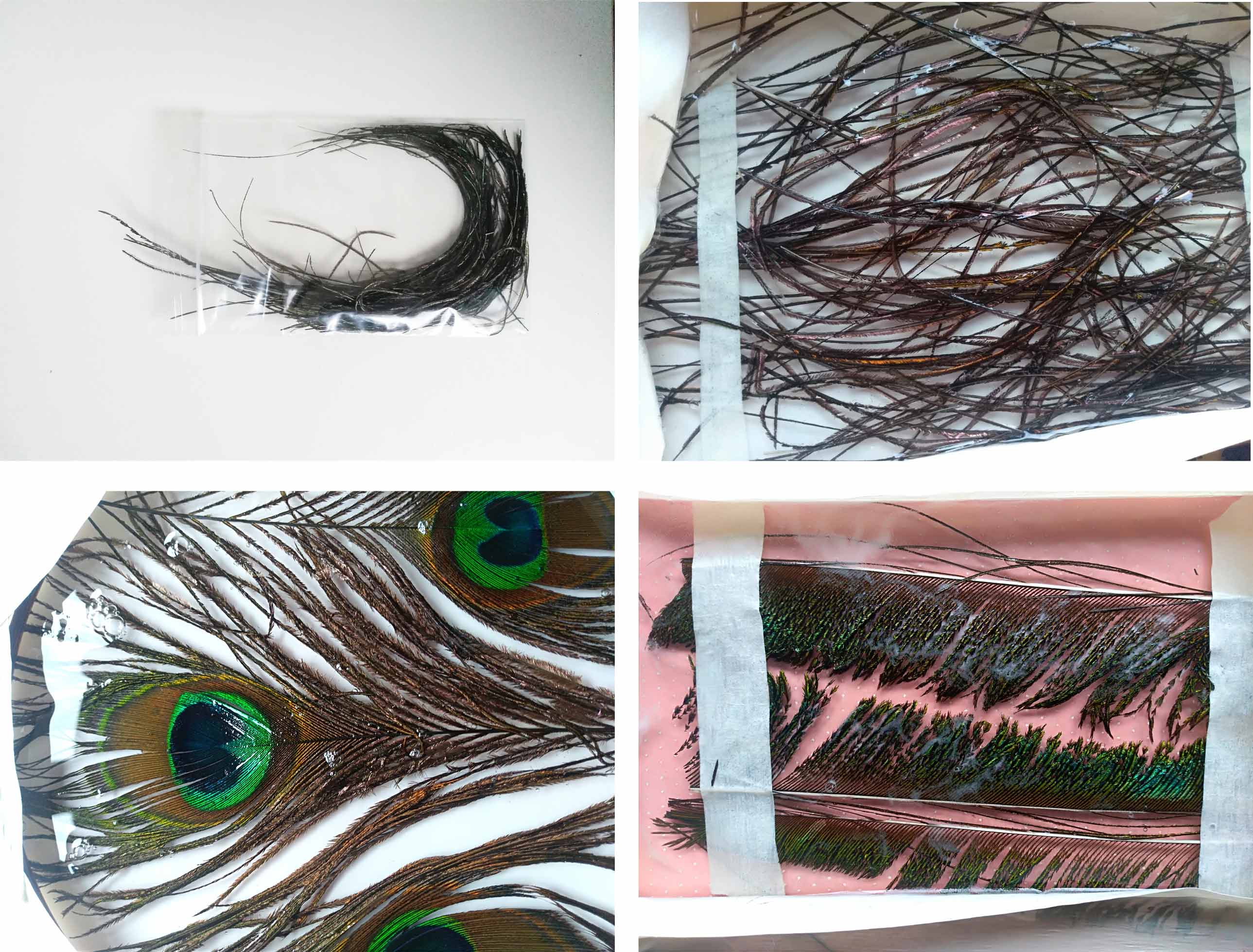
while extracting the samples from the mold I filmed the consistencies of the various results, many of which are still drying. interesting as the foam that was formed if you overcooked the bioplastic that we almost always eliminated, if used as in the case of the crodino sample created a layer of foam while at the bottom remains the clear liquid.
bioplastics fabricademy 2018 from Greta Dalessandro on Vimeo.
Natural dyes#
dyeing fabrics naturally was not something completely new to me, I tried it two or three times, dyeing garments or doing tests. It was interesting to try different bites I had never used.
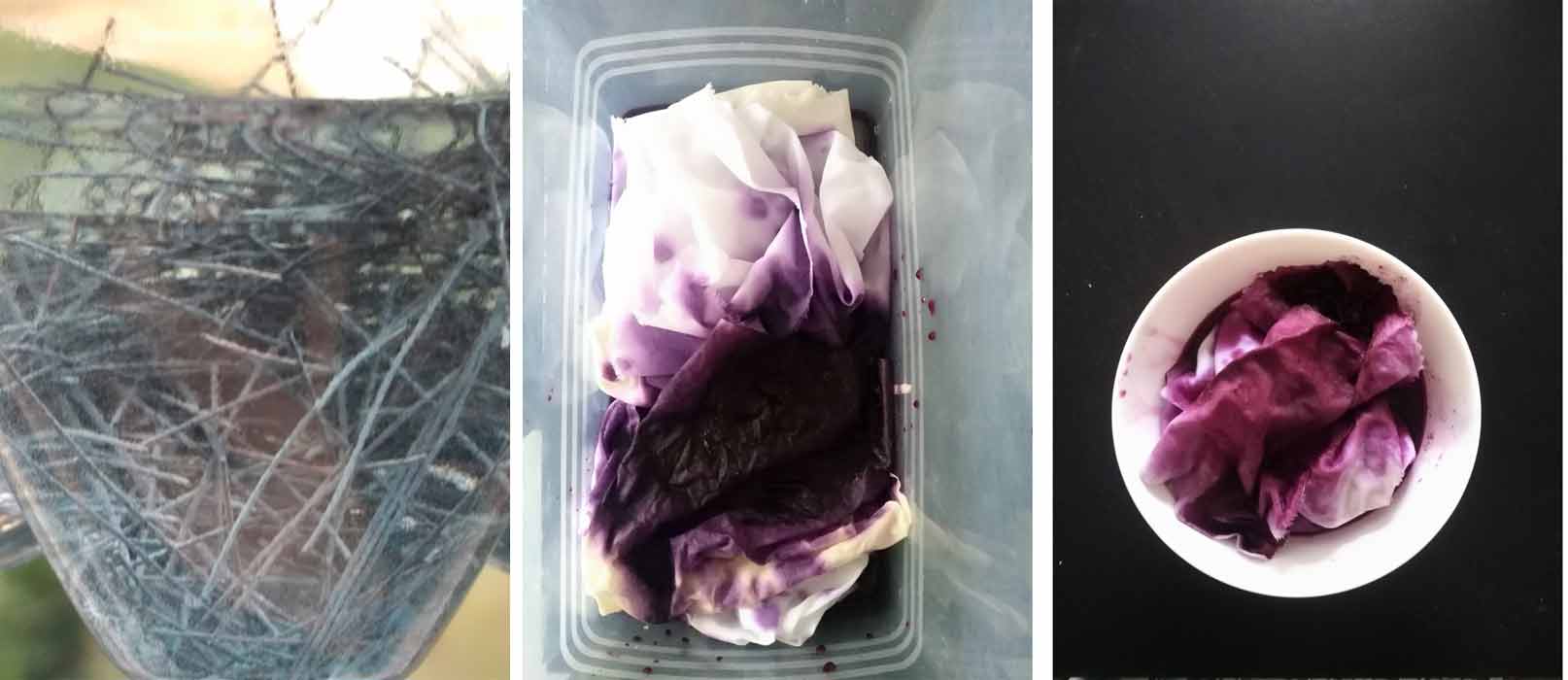
preparation#
we prepared the fabrics (this was a team job!) cutting them into small pieces and weighing them. The first day we had dyes such as annatto, madder, hibiscus and turmeric
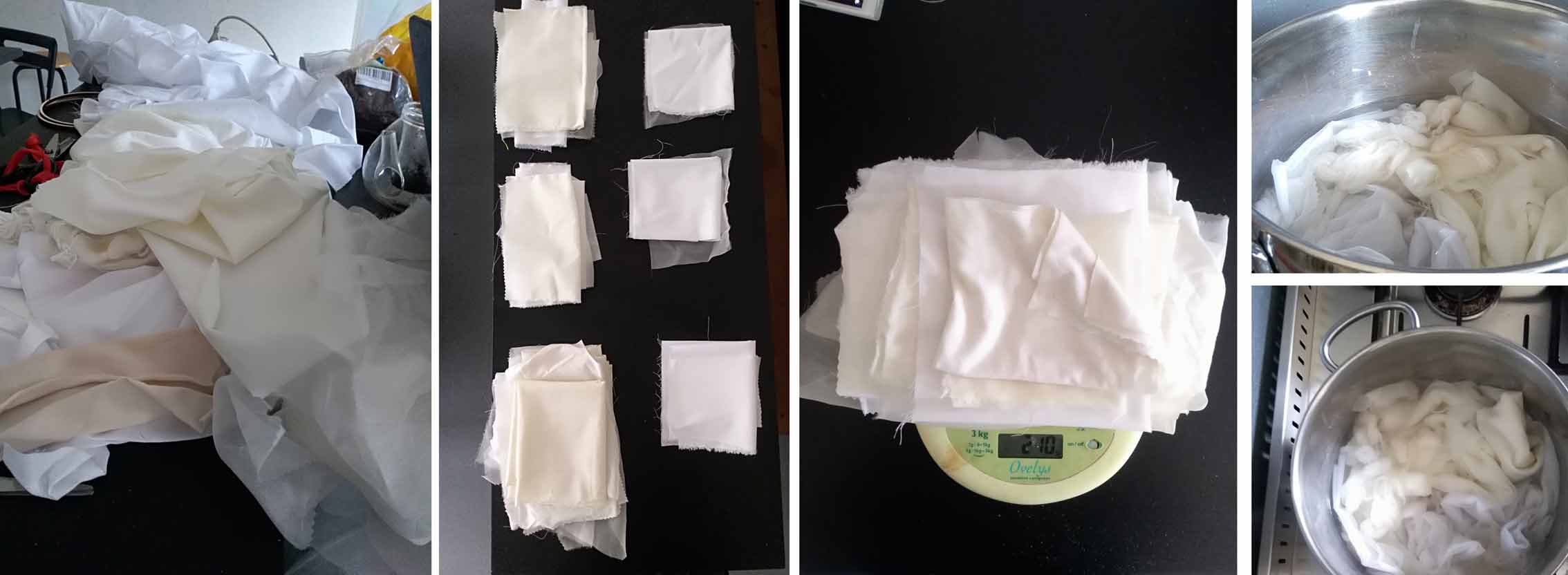
Saturday we tried other ingredients such as onion skin, red cabbage, ginger and we got carried trying also beetroot and spinach with negligible results.
natural shades, result#
I imagined a sort of color bribe, similar to the catalog of pantones or in any case a rather compact catalog to be able to transport and implement with other experiments.
I developed a legend that highlights the mordants used according to color
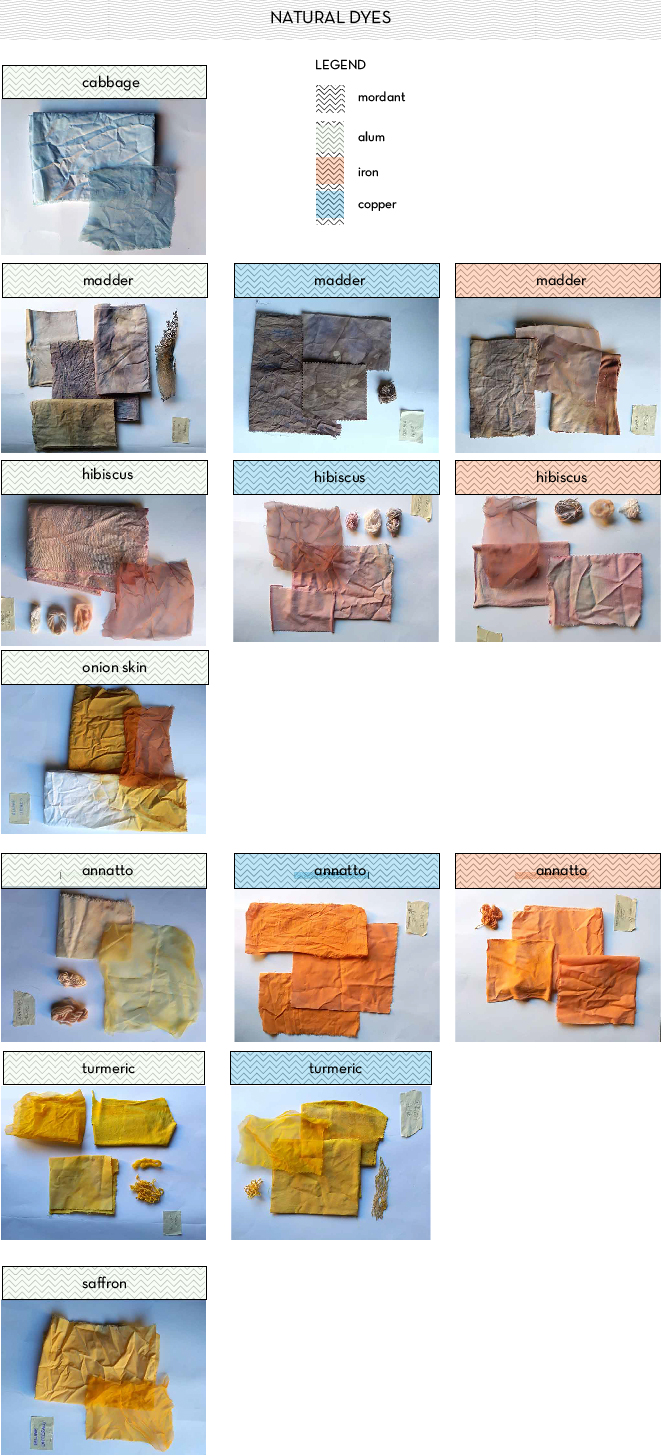
For the real model I wanted to laserize small panels that can allow to roll wires or glue one side of the fabric and the space for the label that identifies stain and stain used. I’ve think about a space for the small pieces of textiles and, in the bottom of the single panel, a part for the wires dyes.
